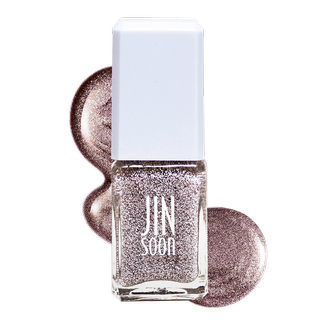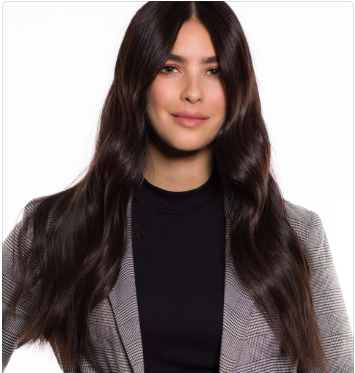
“‘Natural’ or ‘clean’ polish is somewhat of a misnomer, as nail polish is not something that grows or can be found in nature,” explains New York City–based dermatologist Dana Stern, who specializes in nail health. But as consumers become more conscious about what they’re putting on their bodies, companies are taking certain ingredients out of their formulas and calling them “clean.” But there is no government standard for what this term means. (Companies and retailers can have their own definitions and lists of no-no ingredients.) In the nail world, most brands label their polishes by the number of “non-clean” ingredients left out (“3-Free,” “5-Free,” etc.). Here’s what those categorizations mean and why some of the omitted ingredients may have a bad rap.
3-Free: This baseline for healthy polish omits these three ingredients, which are universally shunned by the modern nail industry.
Formaldehyde
Still used as a preservative in cosmetics, this known carcinogen is also linked to asthma.
Phthalates (like DBP)
This class of plasticizing chemicals, used to make products more pliable, can disrupt the reproductive system and may cause birth defects.
Toluene
The toxic ingredient, which helps to suspend pigment evenly
in a formula, can damage the nervous system and cause birth defects.
5-Free: These two additional chemicals may cause concerns, so they’re sometimes removed as well.
Formaldehyde resin
Often used to add shine and durability to a polish, the substance has been shown to cause allergic reactions for some people.
Camphor
This compound may be used to keep polishes from cracking, but inhaling it has been shown to cause dizziness, headaches, and nausea.
7-Free, 8-Free, 10-Free, and Beyond
Brands may remove additional materials, such as the plasticizer ethyl tosylamide, which can cause antibiotic resistance, or others irritants or ingredients rumored to cause disruptions to the body. But many companies ditch ingredients simply because of negative consumer perceptions (often fueled by online rumors or a general assump- tion that chemicals are “bad”) rather than scientific evidence.
Stay In The Know
Marie Claire email subscribers get intel on fashion and beauty trends, hot-off-the-press celebrity news, and more. Sign up here.
The Clean Crew: Health-conscious polish brands are cropping up everywhere. Here, the best formulas of the bunch.
This story appears in the February 2020 issue of Marie Claire.
Taylore Glynn is the Beauty and Health Editor at Marie Claire, covering skincare, makeup, fragrance, wellness, and more. If you need her, she’s probably roasting a chicken, flying solo at the movies, or drinking a bad Negroni at JFK.
-
 Caitlin Clark's WNBA Draft Glow Is Courtesy of Glossier
Caitlin Clark's WNBA Draft Glow Is Courtesy of GlossierShe even wore a just-launched product from the brand.
By Julia Marzovilla Published
-
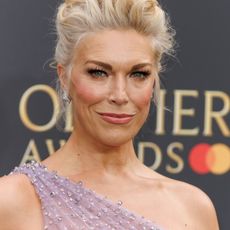 Hannah Waddingham Fiercely Calls Out a Photographer Who Demands She Show More Leg on the Red Carpet
Hannah Waddingham Fiercely Calls Out a Photographer Who Demands She Show More Leg on the Red Carpet“You’d never say that to a man.”
By Rachel Burchfield Published
-
 It Seems Like Everyone’s Obsessed with Rothy’s Shoes
It Seems Like Everyone’s Obsessed with Rothy’s ShoesThis sustainable, one-billion-dollar brand is becoming a go-to for content creators, editors, and A-list celebrities. Here's why.
By Brooke Knappenberger Published
-
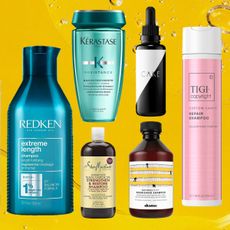 The 32 Best Hair Growth Shampoos of 2024, According to Experts
The 32 Best Hair Growth Shampoos of 2024, According to ExpertsRapunzel hair, coming right up.
By Gabrielle Ulubay Published
-
 The 20 Best Hair Masks for Damaged Hair, According to Experts and Editors
The 20 Best Hair Masks for Damaged Hair, According to Experts and EditorsHealthy strands, here we come!
By Gabrielle Ulubay Last updated
-
 How Often You Should Wash Your Hair, According To Experts
How Often You Should Wash Your Hair, According To ExpertsKeep it fresh, my friends.
By Gabrielle Ulubay Published
-
 The 11 Best Magnetic Lashes of 2023
The 11 Best Magnetic Lashes of 2023Go ahead and kiss your messy lash glue goodbye.
By Hana Hong Published
-
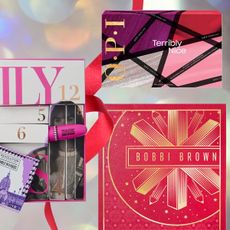 Beauty Advent Calendars Make the Perfect Holiday Gift
Beauty Advent Calendars Make the Perfect Holiday GiftThe gift that keeps on giving.
By Julia Marzovilla Last updated
-
 The 18 Best Natural Hair Products in 2023
The 18 Best Natural Hair Products in 2023Remember: Your curls are your crown.
By Gabrielle Ulubay Published
-
 The 9 Best Hot Rollers for the Curls of Your Dreams
The 9 Best Hot Rollers for the Curls of Your DreamsThis is how we roll.
By Samantha Holender Published
-
 The 12 Best Cream Eyeshadows, According to Makeup Artists
The 12 Best Cream Eyeshadows, According to Makeup ArtistsThe best part? They’re so easy to apply.
By Samantha Holender Published
